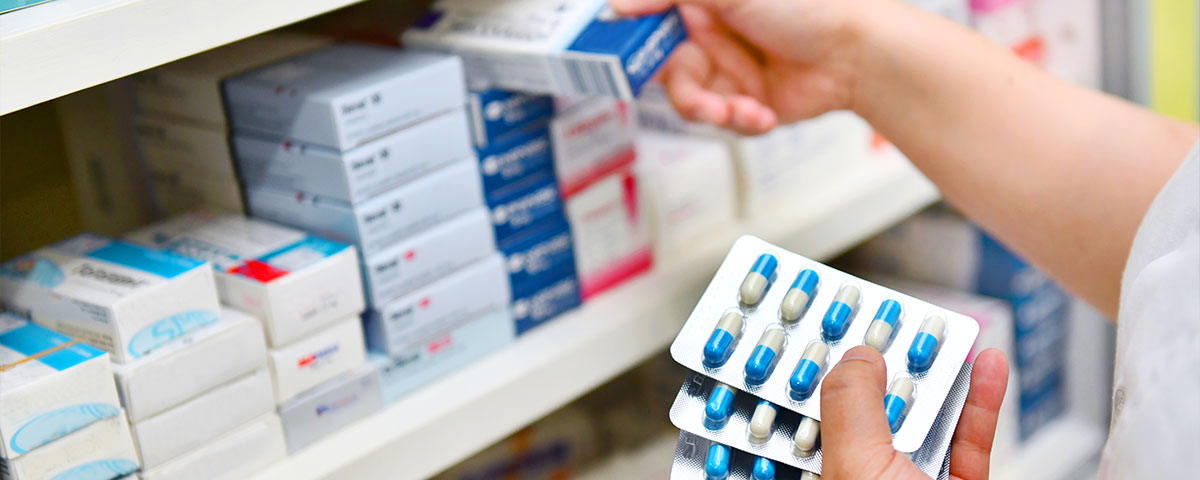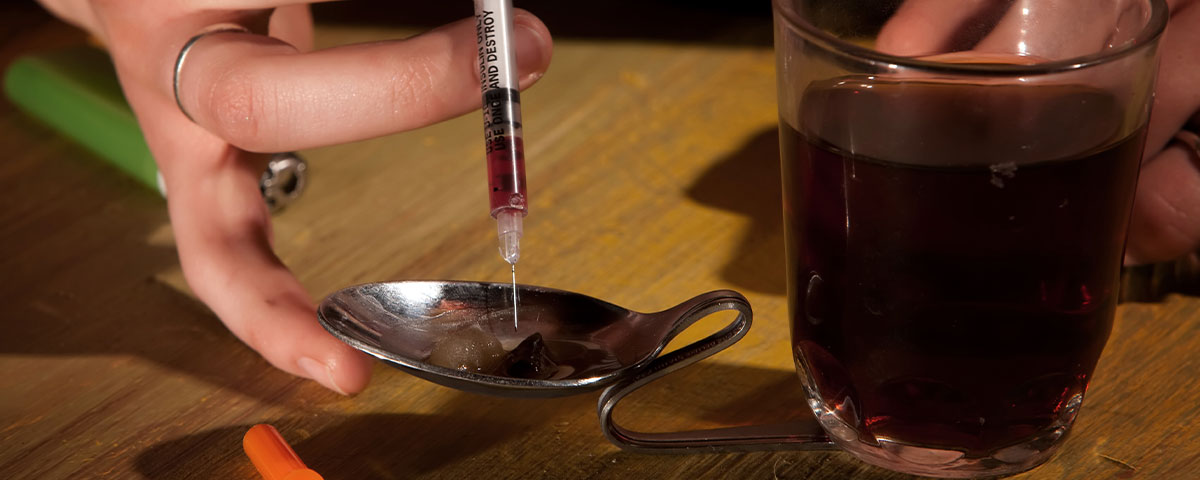Drug abuse has been a problem in the United States since drugs like cocaine and morphine were used in the medical field. In 2017, approximately 19.7 million people aged 12 and older had a substance abuse disorder, 14.5 million of which had alcoholism, and 7.5 million of which had an illicit drug use disorder.1 The rate of drug abuse in the U.S. has continuously risen as a result of the opioid epidemic. Now, millions of individuals are fighting illicit and prescription drug addiction. Our Clearbrook Massachusetts rehab is sharing the 9 most abused drugs in the U.S. and their side effects.
The Dangers of Drug Abuse
Beyond its bodily effects, drug misuse is dangerous in many other ways. One significant concern is the legal consequences of drug abuse. Illegal drug use can result in arrests, criminal charges, and possible jail time. Legal consequences can have a long-lasting impact on a person’s personal and professional life, depending on the jurisdiction and the particular substance involved. Access to resources, employment chances, and community interactions can all be hampered by criminal histories.
Another critical aspect to consider is the impact of drug abuse on the families of addicts. Addiction is a disease that has far-reaching effects on the addict’s loved ones in addition to the person who uses drugs. Addicts frequently cause emotional misery, financial hardship, and psychological distress in their families. As they observe their loved one’s battle with addiction, they could feel helpless, afraid, and frustrated. As trust is lost and boundaries are crossed, relationships may become strained or even broken, which can cause problems in family dynamics and support networks.
Additionally, substance misuse can have a devastating financial impact. Addiction to drugs is an expensive habit that forces sufferers to spend a lot of money on their substance of choice. Financial instability, job loss, bankruptcy, and general economic suffering may result from this. Families of drug addicts may also experience financial hardship as a result of having to support their loved one’s addiction or deal with the fallout from their financial irresponsibility.
The 9 Most Abused Drugs in the U.S. and Their Side Effects
Alcohol
Yes, alcohol is a drug and is the most commonly abused drug in the U.S. According to the 2019 National Survey on Drug Use and Health, nearly 15 million people ages 12 and older struggle with alcoholism.2 Alcoholism is one of the most common types of addiction in the U.S. for a variety of reasons. For starters, alcohol is accessible to people 21 and older, making it possible for one adult that’s of age to purchase as much alcohol as they want. However, other causes of alcohol include mental illness, family history, past trauma, early-age drinking, and stress. Individuals who have a history of alcoholism in their family are more likely to develop this disease than those who do not.
Some common side effects of alcohol include:
- Drowsiness
- Slurred speech
- Nausea and vomiting
- Diarrhea
- Headaches
- Distorted hearing and vision
- Impaired judgment
- Decreased perception
- Lack of coordination
- Unconsciousness
- Anemia
- Coma
- Blackouts
The long-term effects of alcoholism also include liver disease, cancer, and more. The longer a person abuses alcohol, the more likely they are to develop these symptoms. Many people also mix muscle relaxers and alcohol or drink while taking other drugs to experience more intense side effects. Individuals with this substance use disorder need to search for professional addiction treatment. Clearbrook Treatment Centers Massachusetts offers medical detox that helps flush alcohol from the body and aids in the physical healing process.
Marijuana
Marijuana, also known as cannabis, weed, or ganja, is a mixture of dried flowers of plants called Cannabis Sativa. It can be rolled into a blunt, joint, or roach, smoked in a vape pen, or smoked in a bong. People also brew marijuana leaves in tea or bake them into desserts and pastries like brownies. Although many people think marijuana is not addictive, it can cause dependence. Synthetic marijuana is a fake form of weed that includes different chemicals and ingredients that are addictive and can cause serious harm.
Some common side effects of marijuana include:
- Altered senses (seeing brighter colors or different shapes)
- Altered sense of time
- Changes in mood
- Elevated mood
- Impaired body movement and coordination
- Drowsiness
- Difficulties thinking and concentrating
- Difficulties problem-solving
- Impaired memory and judgment
- Hallucinations
- Delusions
Long-term marijuana users are also at risk of psychosis, which is characterized by disturbing hallucinations and delusions. Smoking or ingesting too much marijuana, especially fake weed, can also cause psychosis as well as anxiety and paranoia.
Opioids
Opioids are a class of drugs that are predominantly used to treat severe to chronic pain. Opioids can come in the form of illicit drugs, like heroin, or prescription drugs, like oxycodone. These drugs work by changing the way the brain and body communicate. It attaches itself to opioid receptors present in brain neurons, increasing the levels of a chemical called dopamine. Dopamine acts as a messenger between brain cells and produces euphoria and pleasure. People often become addicted to this high, instigating drug abuse.
Common side effects of opioids include:
- Sedation
- Dizziness
- Nausea and vomiting
- Constipation
- Euphoria
- Decreased heart rate
- Confusion
- Slowed breathing
An individual who begins to misuse these drugs is likely to develop an addiction. An opioid overdose can cause life-threatening symptoms like respiratory depression. Our Massachusetts inpatient drug rehab houses patients with severe addictions for the duration of the program to separate them from outside distractions and temptations. This temporary separation increases the likelihood of recovery and treatment completion.
Cocaine
Cocaine is a tropane alkaloid stimulant drug that derives mainly from coca leaves, which come from plants that are native to South America. Cocaine is a highly addictive drug that can cause tolerance and dependence in its users within a handful of uses. It’s abused recreationally because of the increased energy and alertness it provides. However, like other drugs, it can significantly harm the central nervous system (CNS) and cause an addiction that usually requires cocaine treatment to recover from.
General side effects of cocaine abuse include:
- Increased alertness and energy
- Heightened sensitivity to light, sound, and touch
- Euphoria and an increased sense of happiness
- Anger/irritability
- Paranoia
- Decreased appetite
- Convulsions
- Seizures
- Mood swings
Chronic cocaine users are more likely to develop cardiovascular disease, liver disease, and other physical problems. Cutting agents used by cocaine dealers to make more profit with less product can also contribute to these problems and increase the likelihood of overdose.
Heroin
Heroin is an illegal opioid that’s derived from morphine, another kind of opioid. Heroin is highly addictive and can be smoked, snorted, or injected. Some people also mix heroin and cocaine to form a drug called speedball. Heroin works like any other opioid by attaching itself to opioid receptors and increasing dopamine levels in the central nervous system. It’s highly potent and addictive and can cause various physical and psychological problems.
Common side effects of heroin include:
- Dry mouth
- Heavy feeling in the extremities
- Dry skin and itching
- Skin disorders
- Clouded mental function
- “On the nod” or slipping back and forth between being conscious and unconscious
We also treat heroin addiction at our facility, a process that usually begins after patients have undergone a heroin detox.
Benzodiazepines
Benzos, like opioids, are other prescription drugs that are commonly abused in the U.S. Benzodiazepines are a type of medication known as tranquilizers. Common examples of Benzos are Valium and Xanax. These medications are among the most commonly prescribed to Americans to treat conditions like anxiety, insomnia, and seizures. They act on the CNS to produce sedation, muscle relaxation, and decreased nerve activity in the brain. Many people abuse these drugs for their sedative side effects.
Some common symptoms of benzo abuse include:
- Drowsiness
- Light-headedness
- Sedation
- Confusion
- Lack of coordination and balance
- Dizziness
- Slurred speech
- Muscle weakness
- Problems with memory
- Dry mouth
- Blurred vision
- Nausea and vomiting
- Constipation
Misuse of these medications opens the door to addiction. It’s important to speak to your doctor and follow their directions when taking prescription drugs. Do not take medication unless prescribed to you by a doctor, and do not share your medications with others.
Stimulants
Stimulants can also be prescription or illegal, but both are addictive. Prescription stimulants are medications generally used to treat attention-deficit hyperactivity disorder (ADHD) and narcolepsy. They increase alertness, energy, and a person’s ability to concentrate. When taken without a prescription, these drugs can also cause addiction. They work by affecting levels of neurotransmitters like dopamine and norepinephrine to elevate mood and increase alertness.
Common side effects of stimulant abuse include:
- Increased blood pressure
- Increased heart rate
- Decreased blood flow
- Increased blood sugar levels
- Increased body temperature
- Irregular heart rate
In higher doses, these drugs can cause irregular heart rate and breathing, heart failure, and seizures. Avoid using these drugs unless they’re prescribed to you by your doctor.
Inhalants
Inhalants refer to substances that can only be inhaled. This includes solvents that become gasses at room temperature, aerosol sprays, gasses, and nitrites (common medications for chest pains). Inhalants include anything from household cleaning products to markers and glue. These products are not intended to produce a high, but people abuse them for that reason anyway. Not only can abusing inhalants lead to addiction, but their chemicals can also lead to other health problems like organ damage and brain damage.
Common inhalant side effects include:
- Slurred speech
- Blurred vision
- Lack of coordination
- Euphoria
- Headache
- Dizziness
- Light-headedness
People may also experience hallucinations and delusions. Chronic abuse of inhalants increases the person’s chances of experiencing organ failure and brain damage caused by cut-off oxygen supply to the brain.
Sedatives
Sedatives are prescription medications that reduce brain activity. Sedatives like benzodiazepines, barbiturates, and hypnotics are used to treat conditions like anxiety and sleep disorders. There are also controlled substances in the U.S. because they have a high potential for abuse. Many individuals use these sedatives for their relaxing side effects without realizing the harm.
Typical side effects of sedatives include:
- Sleepiness
- Dizziness
- Drowsiness
- Relaxation and euphoria
- Impaired perception
- Impaired reflexes and coordination
- Slowed breathing
- Decreased sensitivity to pain
- Difficulties concentrating
- Slurred speech
The drug statistics in the U.S. are alarming and are continuously increasing as more variations of drugs and trends related to substance abuse are developed. We offer illicit and prescription drug treatment for people who want to regain their sobriety and live happy lives.
If you or a loved one is caught in the cycle of addiction and needs help, call us now at 570-536-9621 for more information about our addiction levels of care at our drug rehab in Massachusetts.
Sources
- SAMHSA – Results from the 2017 National Survey on Drug Use and Health
- NIH – Alcohol Use in the United States
Related Readings







